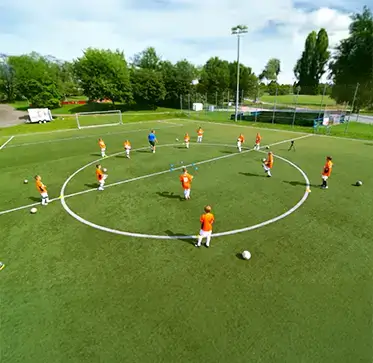CRFC BLOGS
LATEST BLOGS & NEWSLETTERS
Comprehensive Guide to Youth Soccer Line Rules
Youth soccer is more than just a game; it’s a foundation for developing skills, teamwork, and love for the sport. Youth soccer line rules are essential in keeping the game fair, organized, and enjoyable for young players. These rules, including boundaries like the touchline and goal line, help players, coaches, and parents understand and learn the game in a structured way.
Key Youth Soccer Field Line Rules
Youth soccer field line rules help young players understand when the ball is in or out of play. These rules mirror the basics of adult soccer, but they’re simplified to make learning easier.
Touchline Rules
The touchline (the sideline) runs along each side of the field and marks the area where play happens. When the ball crosses the touchline entirely, it’s out of play, and the opposing team is awarded a throw-in. These rules teach young players about field boundaries and help keep the game flowing smoothly.
Goal Line Rules
For a goal to count, the ball must completely cross the goal line between the goalposts and below the crossbar. If the ball only touches the line or doesn’t fully cross, it’s not a goal. Coaches often explain this fundamental rule to help young players understand scoring and the importance of accuracy.
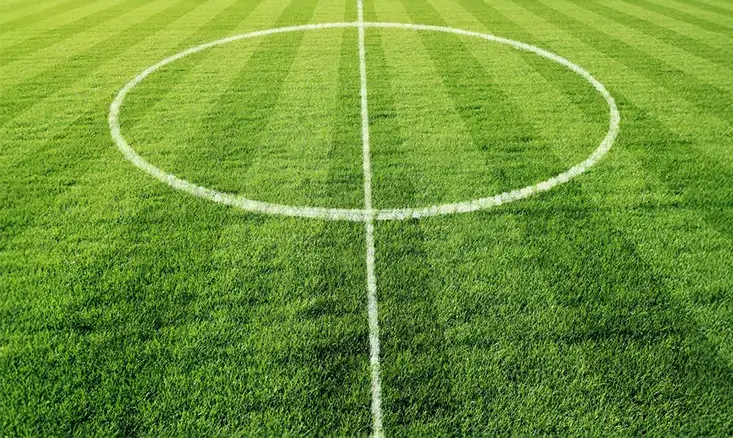
Understanding Youth Soccer Field Markings
Aside from the touchline and goal line, other lines and areas on the field are crucial in youth soccer. These markings help organize the game and teach young players about positioning and strategy.
Centerline
The centerline divides the field into two halves. During kick-offs, players must stay on their half of the field until play begins, teaching young players to respect positions and timing.
Penalty Area Lines
The penalty area marks the space around the goal where goalkeepers can use their hands, and fouls may result in penalty kicks. The size of the penalty area can be smaller in youth soccer than in adult games, as fields for younger players are often small to make the game manageable.
Build-Out Line
The build-out line is a unique feature in youth soccer, especially for age groups like U9 to U12. Positioned midway between the penalty area and the halfway line, this line creates a buffer zone where the opposing team must retreat when the goalkeeper has possession. This gives the goalkeeper time and space to distribute the ball to teammates without immediate pressure. The build-out line encourages young players to learn ball control and pass out from the back rather than relying on long kicks.
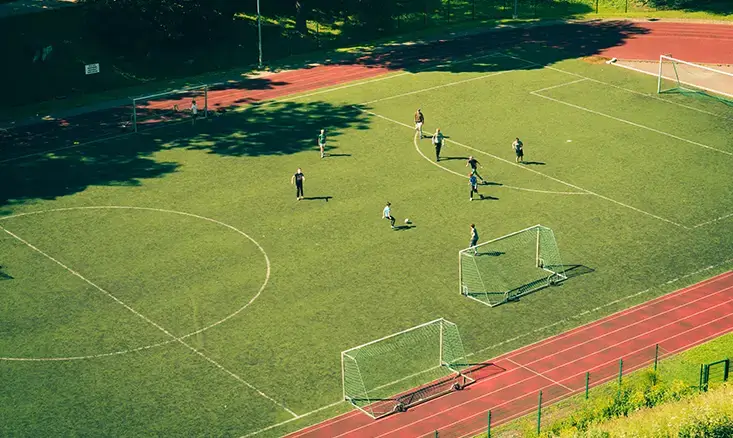
Throw-In Rules and Techniques
Throw-ins are awarded when the ball crosses the touchline, and they allow the team that didn’t last touch the ball to restart play. While throw-ins might seem simple, there are important rules that young players must learn:
Correct Throw-In Technique
To make a valid throw-in, a player must:
- Keep both feet on the ground.
- Use both hands to throw the ball over their head.
Learning this technique helps players develop coordination. For younger players, referees might allow a second attempt if the first throw isn’t correct. This gives young players a chance to practice without feeling pressured by mistakes.
Teaching Throw-In Skills
Coaches often conduct drills to help young players get comfortable with throw-ins. Practicing the right form repeatedly helps them master this fundamental skill in a fun, low-stress way.
Goalkeeper-Specific Line Rules
Goalkeepers have unique responsibilities in soccer, and youth soccer rules help them learn the basics of their position while ensuring fair play.
Ball Distribution Rules
In many youth leagues, goalkeepers are not allowed to throw the ball past the halfway line. This rule encourages teamwork by requiring shorter, strategic passes that involve defenders and midfielders. If the goalkeeper breaks this rule, the opposing team may receive an indirect free kick from the halfway line. This rule helps young players learn to work as a team and develop passing skills.
Time Limits for Goalkeepers
Youth soccer also includes a time limit to keep the game flowing. Goalkeepers usually have 6 seconds to release the ball after gaining control. If they hold it longer, the opposing team may be awarded an indirect free kick. This rule teaches goalkeepers to think quickly and maintain the game’s pace.
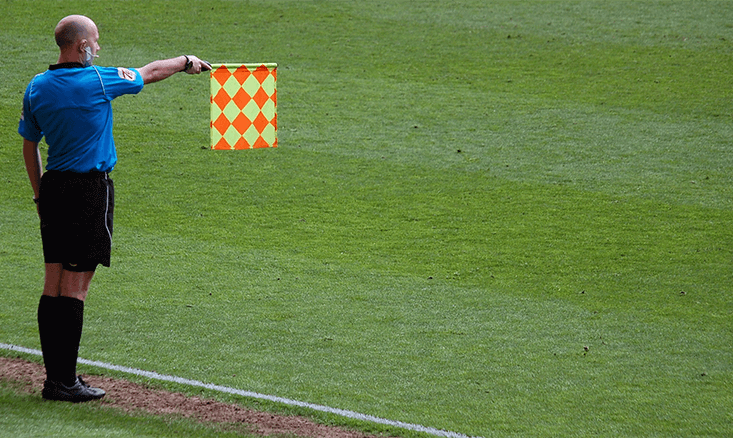
Indoor Youth Soccer 3-Line Rule
Indoor soccer has its own line rules, including the 3-line rule. This rule prevents the goalkeeper from kicking or throwing the ball across three lines on the field (typically the defensive third line, midfield line, and attacking third line) without it touching the ground or another player. This rule ensures that players focus on shorter, accurate passes, keeping the game balanced and skill-based.
Youth Soccer Build-Out Line Rules
The build-out line is a notable addition in youth soccer that benefits both goalkeepers and defenders. It’s used to teach players how to pass safely from the back and plays a key role in developing teamwork and ball control.
Purpose of the Build-Out Line
The build-out line allows goalkeepers to pass the ball to teammates without immediate pressure from opponents. Opposing players must retreat behind the build-out line until the ball is put into play, which provides goalkeepers with a moment to make strategic passes. This rule encourages young players to pass short, think tactically, and build plays from the back rather than kicking long out of pressure.
Building Skills Through the Build-Out Line
Coaches often use the build-out line to teach essential skills like passing, positioning, and coordination. It helps young players gain confidence in ball control and decision-making, laying the groundwork for more advanced gameplay as they grow older.
Penalty and Free Kick Line Rules
Youth soccer includes specific rules for direct and indirect free kicks, which are awarded for various fouls and rule violations. Understanding when and how these kicks are taken is essential for both players and coaches.
Direct and Indirect Free Kicks
Direct Free Kicks
It can be kicked directly toward the goal.
Indirect Free Kicks
The ball must touch another player before a goal can be scored. Indirect kicks are commonly awarded when the goalkeeper violates distribution or time limit rules.
Youth Penalty Kick Rules
A penalty kick is awarded if a foul is committed within the penalty area. In youth soccer, the distance of the penalty mark from the goal may be adjusted based on age, allowing young players to reach the goal with their shot. This adaptation helps ensure fairness while allowing players to develop confidence and technique.
Youth Soccer Field Dimensions and Adjusted Line Markings
Youth soccer fields are smaller than standard adult fields, and markings are adjusted accordingly. This ensures the field size is appropriate for young players, making it easier for them to manage the space.
Field Size Adjustments
Smaller fields allow young players to participate fully and develop their skills in a manageable setting. Smaller fields also mean smaller penalty areas, which affects the placement of certain line markings and rules.
Modified Field Markings
Youth soccer includes unique markings, like the build-out line, which are not used in adult soccer. These adjustments promote skill-building and strategic play in a way that’s tailored to young players’ needs.
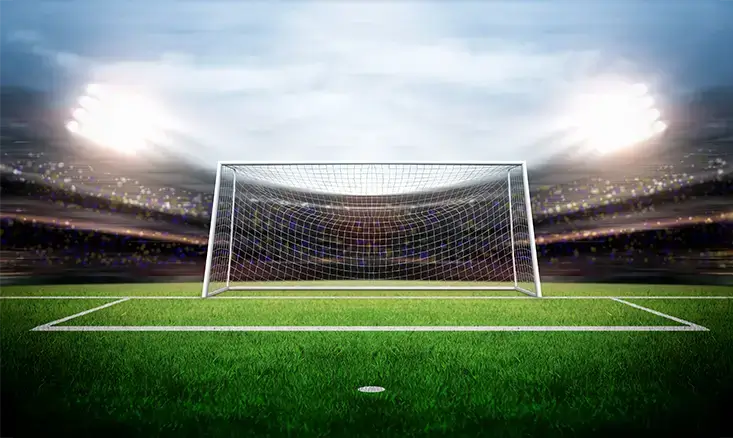
Conclusion
Youth soccer line rules are fundamental in creating a structured and enjoyable game for young players. From basic rules like the touchline and goal line to unique adaptations, these guidelines support a safe, engaging, and development-focused experience.
FAQs
What are basic youth soccer line rules?
Youth soccer line rules include the touchline for throw-ins and the goal line for scoring. The ball must fully cross the line to be considered out of play or for a goal to count.
What is the build-out line rule in youth soccer?
The build-out line gives goalkeepers space to pass the ball without pressure. Opponents must stay behind the line until the ball is played out.
How do throw-ins work in youth soccer?
For a proper throw-in, both feet must be on the ground, and the ball must be thrown with both hands over the head. Younger players may get a second try if they make a mistake.
What is the 3-line rule in indoor youth soccer?
The 3-line rule stops the goalkeeper from throwing or kicking the ball across three field lines without touching the ground or another player, promoting controlled play.
How are penalty kicks adjusted in youth soccer?
Penalty kick distances may be adapted for younger players based on their skill level, making it easier for them to reach the goal.

Did you find this useful?


